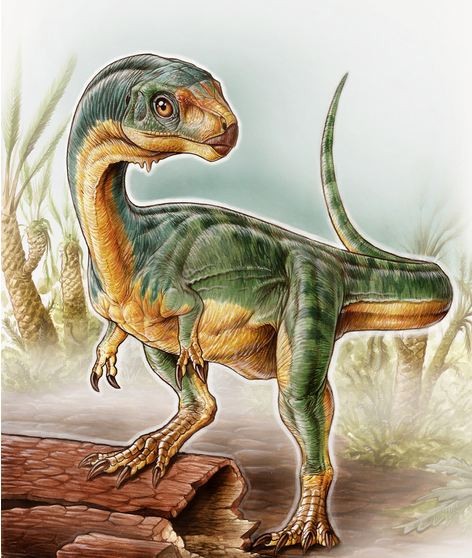The fossils of a 10 foot-long dinosaur recently discovered by a seven year-old Chilean boy has the two tiny forearms of a ferocious T. rex ; the long neck of a brontosaurus and the vegetarian appetite of a stegosaurus.
This mash-up of conflicting physical characteristics into one compact body led archaeologists to describe the newly discovered "Chilesaurus diegosuarezi" as "The Platypus".
C. diegosuarezi, which lived 145 million years ago, was named after seven-year-old Diego Suarez, a Chilean boy that found the fossilized remains of the new species while with his geologist parents that were studying rocks in Patagonia.
Diego came across the remains while looking for decorative stones with his sister, Macarena, at the Toqui Formation in Aysén, south of Patagonia.
Researchers that later explored the area further unearthed more fossils of Chilesaurus. At first they thought the bones belonged to many kinds of dinosaurs but concluded the bones belonged to one animal after finding complete Chilesaurus skeletons.
The discovery provides strong evidence of "convergent evolution" with the combination of unique, if bizarre, anatomical features in a single species.
What we now know is Chilesaurus grew up to 10 feet long and was a member of the two-legged theropod group of dinosaurs that included predatory meat eaters such as Tyrannosaurus, Velociraptor and Carnotaurus.
But instead of tearing into meat, Chilesaurus munched on plants. It stuffed plants into its horny-beaked mouth with its short Tyrannosaurus rex-like forelimbs. It used its leaf-shaped teeth to easily chew on plants.
"Chilesaurus probably fed upon ferns, araucarians, bennetitaleans, and podocarps -- all of which were plants that were abundant at the end of the Jurassic," said study lead author Fernando Novas of the Bernardino Rivadavia Natural Sciences Museum in Buenos Aires to Discovery News.
Chilesaurus provides a good example of how evolution works in deep time and is one of the most interesting cases of convergent evolution documented in the history of life, said Martin Ezcurra, a professor at the University of Birmingham.




























